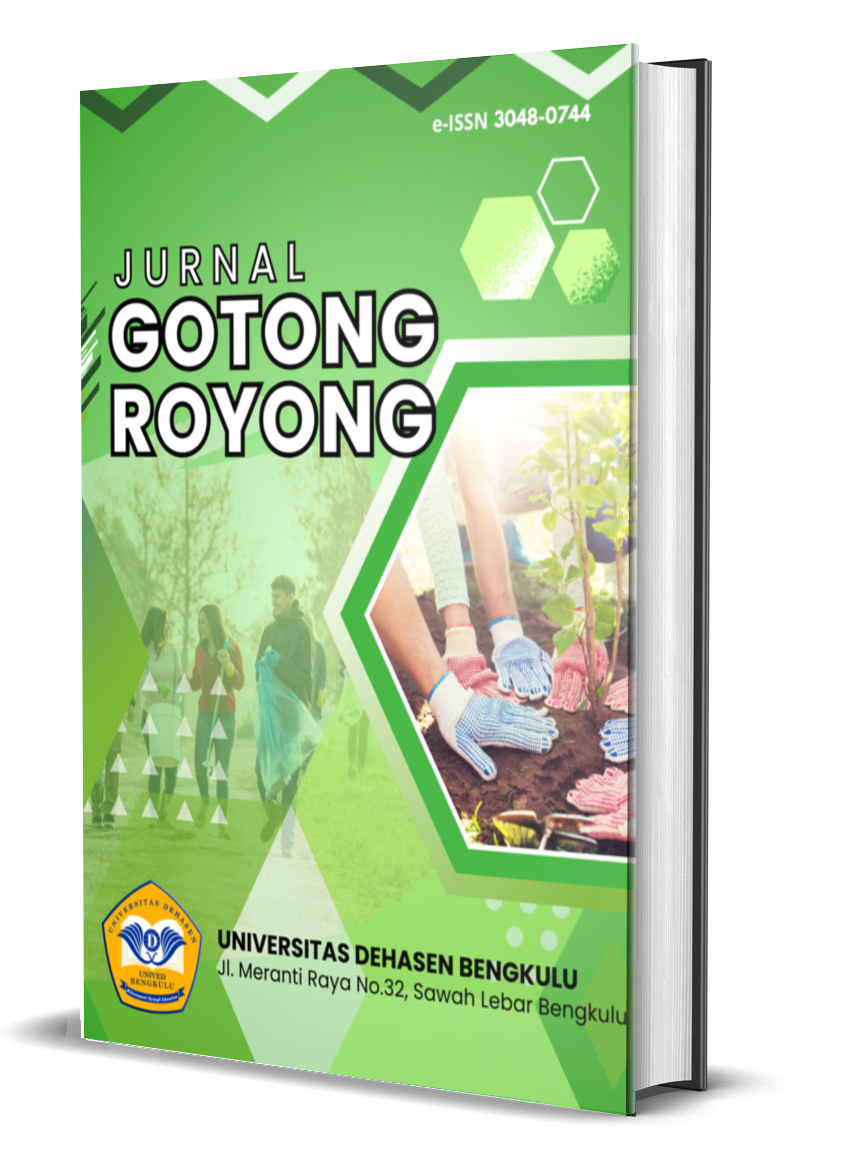Pengolahan Limbah Botol Plastik Dan Pemulihan Trauma Anak Pasca Gempa
Abstract
This study aims to process plastic bottle waste into a medium for making a garden to reduce the accumulation of plastic waste in RT 58, Betungan Village, and provide an approach to post-earthquake trauma recovery by studying together and interactively to children in RT 58. This study uses an observational methodology involving residents, children in RT 58, and the local government. The findings show that the large pile of plastic bottle waste behind the RT 58 housing and polluting the surrounding environment can be used as a medium for a toga garden to add to the beauty of the environment in RT 58. The methodology for post-earthquake trauma recovery in children using the method of studying together and interactively increases courage and is one of the efforts to reduce children's trauma after the Bengkulu earthquake.
Downloads
References
2. Ramah Lingkungan Melalui Pemanfaatan Sampah Botol Plastik Planting With Environment-Based Hydroponic Systems Using Plastic Bottle (Vol. 4, Issue 1)
3. Muhibah, S., & Maisaroh, I. (2021). Mengembangkan pendidikan karakter dalam pembelajaran pendidikan agama Islam di SD Islam Tirtayasa Kota Serang. Jurnal Pendidikan Karakter “JAWARA” (JPKJ), 7(2), 146–160
4. Salamor, A. M., Salamor, Y. B., & Ubwarin, E. (2020). Trauma Healing Dan Edukasi Perlindungan Anak Pasca Gempa Bagi Anak-Anak Di Desa Waai. Community Development
5. Journal : Jurnal Pengabdian Masyarakat, 1(3), 317–321. https://doi.org/10.31004/cdj.v1i3.1015
6. Seni, P. K. (2022). Kerusakan lingkungan hidup sebagai ide penciptaan seni lukis.
Copyright (c) 2025 Defri Ardiansah, Satria Yosa Putra, Kurnia Rahma Wati, Selvin Aristina, Sentri Anggraini, Ririn Afriani, Hesti Nur’aini, Herri Fariadi

This work is licensed under a Creative Commons Attribution-ShareAlike 4.0 International License.
An author who publishes in the Jurnal Gotong Royong agrees to the following terms:
Author retains the copyright and grants the journal the right of first publication of the work simultaneously licensed under the Creative Commons Attribution-ShareAlike 4.0 License that allows others to share the work with an acknowledgement of the work's authorship and initial publication in this journal
Submission of a manuscript implies that the submitted work has not been published before (except as part of a thesis or report, or abstract); that it is not under consideration for publication elsewhere; that its publication has been approved by all co-authors. If and when the manuscript is accepted for publication, the author(s) still hold the copyright and retain publishing rights without restrictions. For the new invention, authors are suggested to manage its patent before published. The license type is CC-BY-SA 4.0.
Jurnal Gotong Royong
is licensed under a Creative Commons Attribution-ShareAlike 4.0 International License.










